I am trying to recreate the two plots on the left:
The colour gradient is supposed to be lighter at 0, and darker at the extreme values. I want to use the viridis package to create the colour gradient.

Here is my sample dataset:
library(tidyverse)
library(viridis)
# simulate t-values
data = data.frame(sim =1:10000,
t_0= rt(n = 10000,df =12, ncp=0),
t_1 = rt(n = 10000,df =12, ncp=1.2))
# compute p-values
data = data %>%
mutate(p_0 = 2* pt(t_0, df=12, lower.tail = ifelse(t_0 > 0,FALSE ,TRUE)),
p_1 = 2* pt(t_1, df=12, lower.tail = ifelse(t_1 > 0,FALSE ,TRUE)))
# convert from wide to long
data.long = data %>%
gather(condition,measurement, t_0:p_1) %>%
separate(col=condition, into=c("para","hyp"), sep = "_")
# convert to wide repeated measures format
data.wide = data.long %>% spread(key = para, measurement)
Here is what I tried, however the colour here is centered around the mean of the values on the x-axis instead of being centered on 0. I can't figure out how to make it right, I think it's something about trying to use scale_fill with the histogram.
ggplot(data.wide) +
geom_histogram(aes(x=t,fill=..x..),
binwidth=.01 )+
scale_fill_gradientn(colours = c(viridis::viridis(5),
rev(viridis::viridis(5))[2:5]))+
facet_wrap(~ hyp ,ncol=1)
Which gives me this output:

